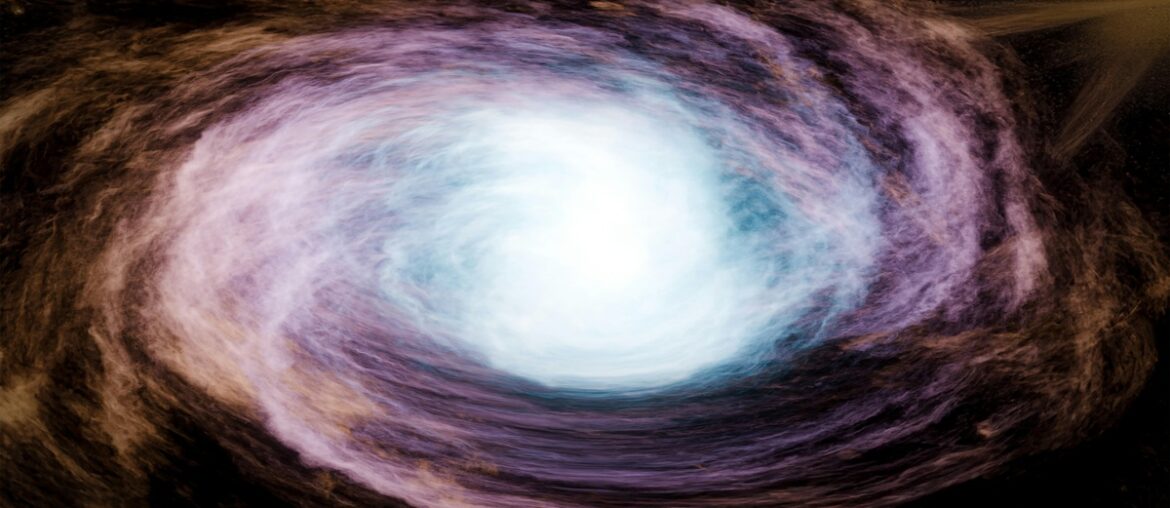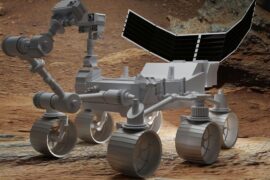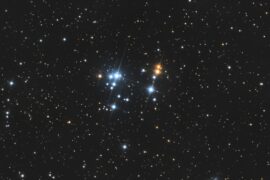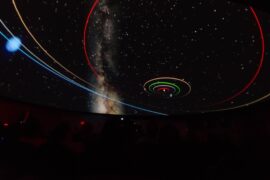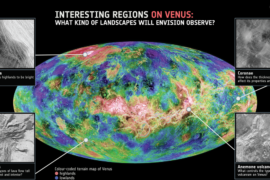In January 2006, NASA’s Stardust capsule parachuted back to Earth carrying tiny grains collected from comet Wild 2—actual stardust that had traveled across the Solar System. Scientists cheered because those millimeter- and micrometer-scale particles are direct samples of material that helped build planets and carried complex organics and ices. That return was a rare chance to study pristine extraterrestrial dust in terrestrial labs and to compare measurements with astronomical spectra and meteorite chemistry.
Cosmic dust is tiny but mighty: these microscopic grains shape planetary systems, carry water and organics, affect climate and spacecraft, and provide unique windows into stellar history. Below are 12 clear, evidence-backed facts about cosmic dust that explain where it comes from, what it’s made of, how it builds worlds, and why it matters for science and everyday life — all told in a conversational, but evidence-driven voice. Read on for concrete examples, numbers, and a few surprises about these cosmic grains.
Origins and Composition of Cosmic Dust

Cosmic dust forms in many stellar environments and then gets processed in the interstellar medium. Evolved stars shed material in slow, cool winds; supernovae and novae blast out dust-rich ejecta; and dense clouds rework grains with ice mantles and radiation. These grains are microscopic carriers of heavy elements forged in stars, and their mineralogy ranges from silicates to carbonaceous particles and ices.
Define terms: interstellar dust lives between the stars and circulates through the galaxy, while interplanetary dust or micrometeorites orbit within planetary systems. Presolar grains—embedded in some meteorites—preserve isotopic clues to their stellar origins. Below are four facts that dig into sources, composition, sizes, and the way grains lock in stellar history.
1. Born in stars: stardust from stellar winds and supernovae
Many cosmic dust grains condensed in cool outflows from evolved stars or formed in supernova ejecta. When an asymptotic giant branch (AGB) star sheds its atmosphere or a massive star explodes, conditions allow refractory elements to nucleate into tiny solids that later seed the interstellar medium.
Evidence comes from presolar grains discovered inside meteorites in the 1980s: mass spectrometry revealed isotopic ratios inconsistent with Solar System formation but matching nucleosynthesis models for AGB stars and supernovae. For example, presolar silicon carbide (SiC) grains show silicon and carbon isotopic patterns diagnostic of specific stellar processes.
Real-world relevance: those grains are literal samples of stellar material, used to test nucleosynthesis models and stellar-evolution calculations. And of course, the Stardust return in 2006 added cometary particles to the dataset for comparison.
2. What cosmic dust is made of: silicates, carbon, and ices
Common grain compositions include amorphous and crystalline silicates, carbonaceous matter (from PAH-like compounds to graphitic forms), and volatile ices that coat grains in cold regions. Spectroscopy in the lab and from space ties spectral features to specific minerals and organics.
Observational evidence: astronomers detect a characteristic silicate emission feature near 10 µm in many protoplanetary disks and evolved-star envelopes. Quantitatively, dust comprises roughly 1% of the interstellar medium’s mass but dominates the opacity and surface chemistry of clouds.
Application: composition controls infrared signatures and thus telescope planning. For instance, Spitzer and ground-based mid-IR spectra revealed crystalline silicates in some disks, guiding models of thermal processing and radial mixing in planet-forming environments.
3. Tiny but measurable: grain sizes and shapes
Typical interstellar grain radii fall in the submicron range, about 0.005–0.25 µm. Size and shape determine how grains scatter and absorb light, producing the wavelength-dependent extinction curves astronomers measure along different sight lines.
Supporting evidence comes from combined techniques: light-scattering and extinction studies set size distributions, while electron microscopy of collected interplanetary dust particles (IDPs) confirms a broad variety of morphologies. Stratospheric collection flights return fragile, often porous grains that we image with SEM and TEM.
Practical point: telescope wavelength choice matters. Optical observations are more affected by small-grain scattering; mid-IR sees thermal emission from warmed dust. That’s why submillimeter arrays and infrared observatories are essential to study cool grain populations.
4. Preserving stellar history: isotopes and presolar grains
Some dust grains predate the Solar System and carry isotopic anomalies that record specific stellar processes. These presolar grains were first convincingly identified in the 1980s when unusual isotopic ratios in meteorite inclusions could not be produced in Solar System reservoirs.
Laboratory mass spectrometry detects extreme C, N, Si, and O isotopic signatures in silicon carbide, graphite, and oxide grains. Those signatures point to parent stars such as AGB stars or supernovae, providing empirical checks on nucleosynthesis theory and stellar models.
Why it matters: by studying presolar grain isotopes we get a sampled record of galactic chemical evolution—pieces of prior generations of stars embedded in meteorites that arrived in our labs.
Cosmic Dust in Planet Formation and Habitability

Dust is the building material for planets and plays a direct role in making worlds habitable. From tiny sticking events to delivery of water and organics, dust controls disk evolution, planet composition, and the volatile inventory a young planet inherits.
The following facts cover how grains grow into planets, how they deliver volatiles, how they affect atmospheres, and how dust shielding creates chemical niches in disks.
5. Seeds of worlds: dust coagulates into planets
Planet formation starts with micron-scale grains sticking together to form larger aggregates, then pebbles, and eventually kilometer-scale planetesimals. Growth proceeds through collisions and collective effects like the streaming instability that concentrates solids into dense clumps.
ALMA images such as the HL Tau observations from 2014 show bright rings and gaps in protoplanetary disks interpreted as dust concentration zones or nascent planets sculpting the disk. Simulations of dust traps and pebble accretion reproduce many of those features.
Understanding these mechanisms helps explain observed exoplanet demographics and informs mission planning that seeks to characterize young planetary systems and their formation histories.
6. Delivery of water and organics to early Earth
Dust-bearing bodies—carbonaceous asteroids and comets—likely delivered a substantial portion of Earth’s water and organic molecules. Carbonaceous chondrites can contain up to roughly 10% water by weight, plus a rich inventory of soluble organics.
Concrete examples include the Murchison meteorite, which contains hundreds of organic compounds and amino-acid precursors, and cometary particles returned by Stardust in 2006 that showed both silicate minerals and carbon-rich matter. Laboratory analyses tie these materials to early-Earth volatile budgets.
That delivery is central to theories for the origin of Earth’s oceans and to models for prebiotic chemistry on the young planet.
7. Dust shapes atmospheres and climates
Micrometeorites ablate in planetary atmospheres and produce fine smoke particles that seed high-altitude clouds and participate in chemical cycles. On Earth, meteoric smoke contributes to noctilucent cloud formation and to metal layers (iron, magnesium) in the ionosphere.
These inputs matter because upper-atmosphere chemistry affects ozone, ionization profiles, and radiative balance on long timescales. Over geological epochs, variations in dust influx could modulate climate in subtle ways.
Practical implications include using meteoric inputs to interpret satellite observations of noctilucent clouds and modeling atmospheric chemistry for other planets with different dust environments.
8. Shielding during formation: dust blocks radiation in disks
Dust provides opacity in protoplanetary disks, blocking stellar ultraviolet and X-ray radiation from penetrating to the midplane. That shielding creates cooler, denser regions where ices survive and complex chemistry can proceed on grain surfaces.
Disk temperature gradients and radiative-transfer models show how dust optical depth sets snowline locations—where water and other volatiles freeze. Those ice lines influence where particular planet types can form and what volatiles they retain.
So dust opacity is not a nuisance here but an essential controller of chemistry and eventual planetary composition.
Scientific, Technological, and Cultural Impacts

Cosmic dust both enables and complicates astronomy, creates engineering headaches for spacecraft, and connects people to space through bright meteor displays. The next facts look at how dust traces star formation, threatens hardware, inspires lab work, and fuels public engagement.
9. Dust as a tracer: maps star formation and galaxy evolution
Dust emits thermally in the infrared and blocks optical light, so it hides young stars while simultaneously signaling where star formation is occurring. Infrared and submillimeter telescopes reveal dust continuum emission that correlates with cold, star-forming gas.
Observationally, missions like Herschel, Spitzer, ALMA, and now JWST have shown that a large fraction of star formation in some galaxies is obscured in optical surveys and becomes visible in the infrared. Quantitatively, IR-based measures often increase star-formation-rate estimates where dust extinction is high.
Practically, dust maps are indispensable for measuring galaxy evolution and for planning follow-up observations that probe embedded protostars and cold cores.
10. Engineering and safety: dust hazards to spacecraft and astronauts
Even tiny grains can be dangerous at orbital speeds. Typical interplanetary impact velocities are on the order of tens of kilometers per second, at which a submillimeter particle can perforate thermal blankets or damage optics.
Engineering responses include Whipple shields—sacrificial bumpers that vaporize incoming grains and disperse the energy—and mission planning to avoid known meteor streams during vulnerable phases. Historical lessons include abrasive Apollo lunar dust that degraded seals and suits.
Spacecraft such as those in the Cassini mission carried dust detectors to measure impact rates, providing data that feed shielding design for future missions.
11. Lab and tech uses: cosmic-dust analogues and materials research
Scientists synthesize cosmic-dust analogues to study surface chemistry, catalysis, and optics under controlled conditions. Experiments recreate interstellar ices, irradiate them, and track the formation of simple and complex molecules on grain analogs.
These lab studies reveal pathways to molecules relevant for prebiotic chemistry and refine spectroscopic templates used to interpret telescope data. They also inspire nanomaterials research by demonstrating how nanoscale surfaces catalyze reactions.
Examples include simulated interstellar ice experiments and surface chemistry performed on soot-like carbonaceous analogues to study hydrogenation and organic synthesis.
12. Public connection: meteor showers and the steady fall of dust to Earth
Cosmic dust is the most visible bridge between the public and space. Meteor showers like the Perseids and Geminids occur when Earth crosses a cometary dust trail and produces dozens to hundreds of meteors per hour at peak.
Alongside spectacular showers, Earth accumulates a steady rain of micrometeoroids—commonly estimated at roughly 40,000 metric tons per year entering the atmosphere. Scientists collect stratospheric dust and analyze micrometeorites, and citizen observers contribute to shower monitoring and recovery efforts.
Those public events and collection programs drive outreach, education, and simple wonder. Look up on a clear August night. You might catch a piece of the Solar System burning bright.
Summary
- Dust is a foundational ingredient of planet formation and preserves stellar history in presolar grains and isotopes.
- Tiny grains control chemistry, climate inputs, and engineering risks—despite making up only ~1% of the interstellar medium’s mass.
- About 40,000 metric tons of extraterrestrial material reach Earth each year, and meteor showers (Perseids, Geminids) offer direct public encounters with stardust.
- Follow sample-return missions (Stardust, Hayabusa2, OSIRIS-REx) or step outside during peak shower nights to connect with these cosmic grains and learn more about the universe.
- For a concise set of facts about cosmic dust, remember: origins in stars, diverse compositions, essential role in planet-building, and wide-ranging scientific and cultural impacts.
Enjoyed this article?
Get daily 10-minute PDFs about astronomy to read before bed!
Sign up for our upcoming micro-learning service where you will learn something new about space and beyond every day while winding down.

